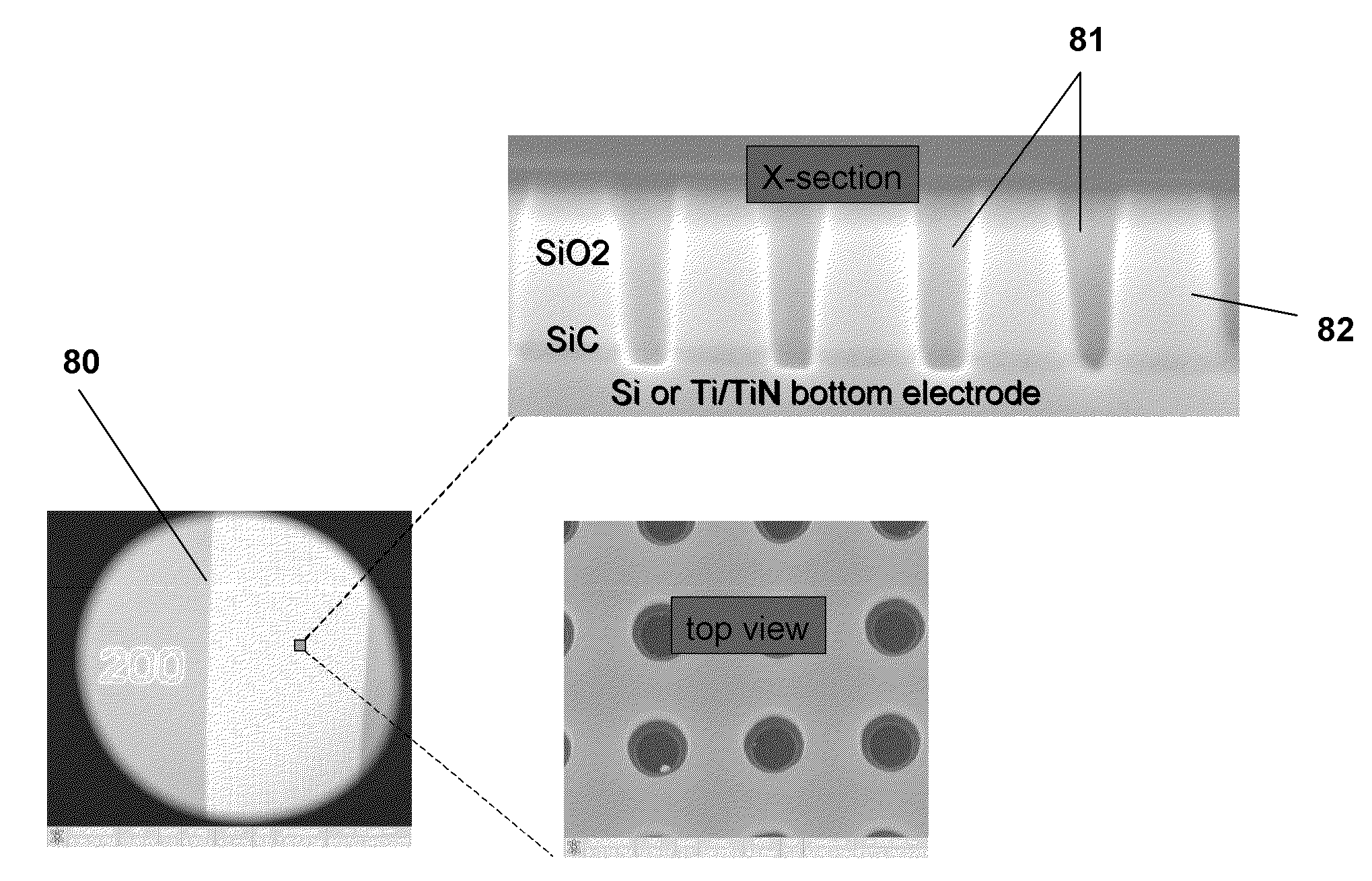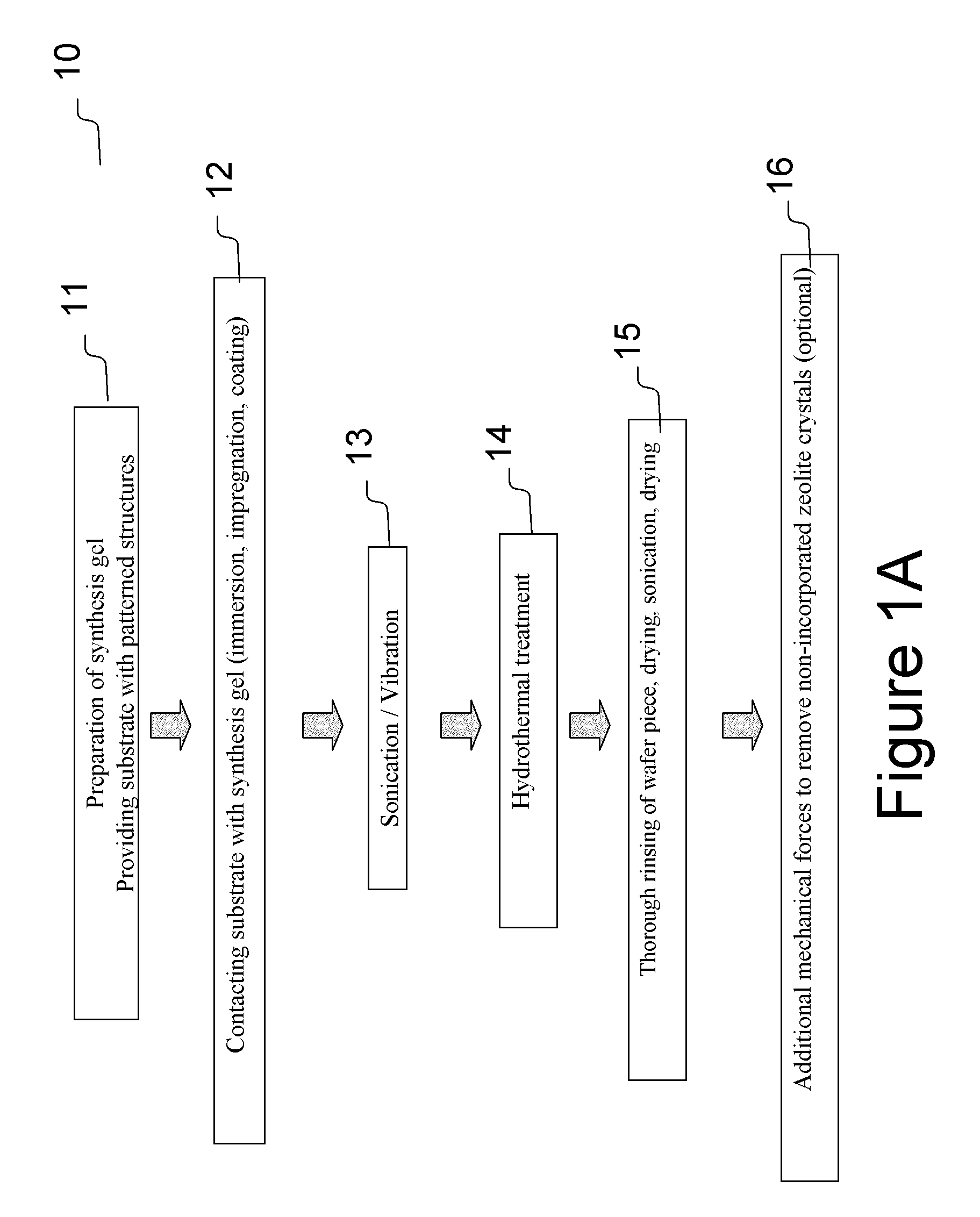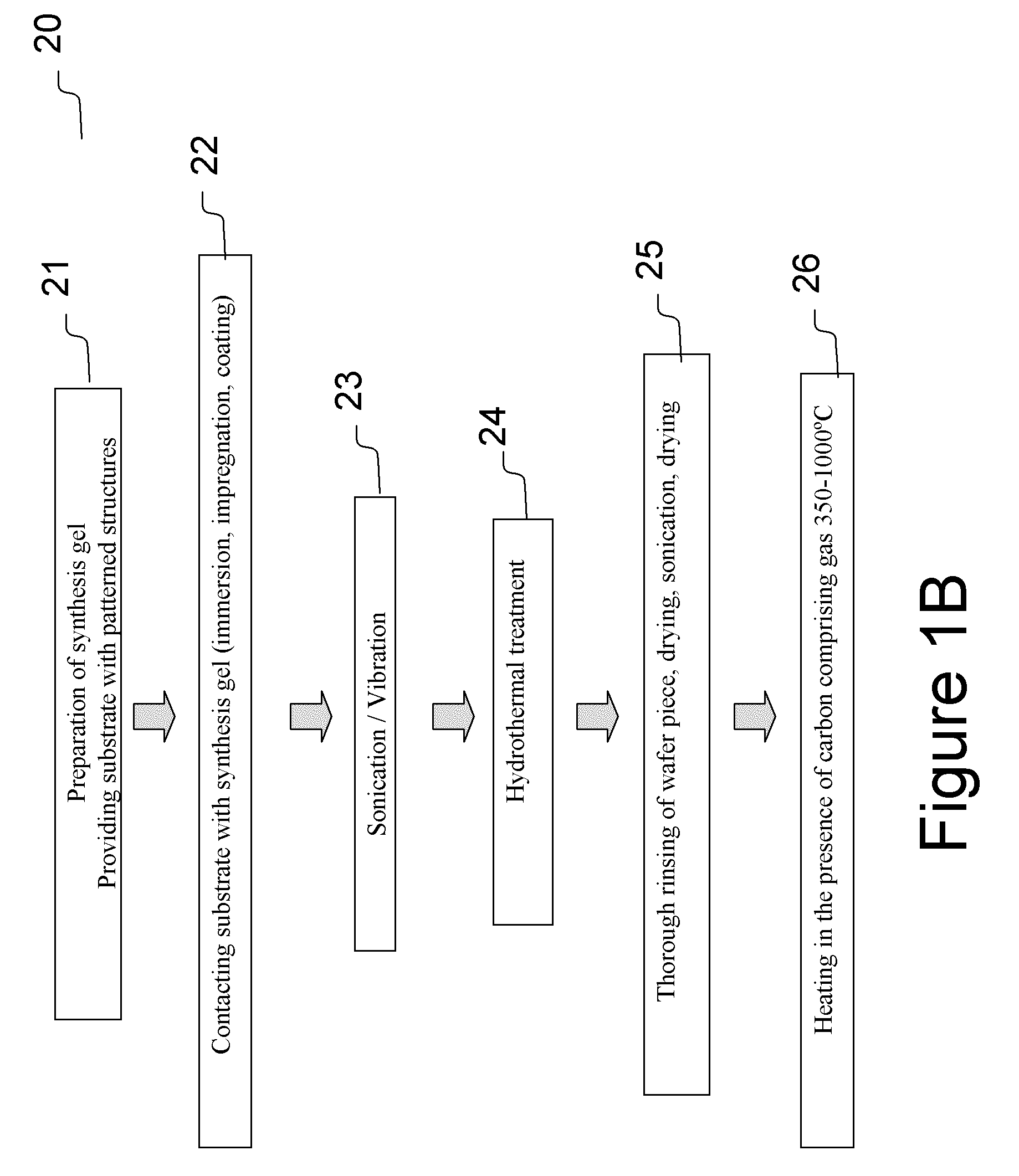Synthesis of zeolite crystals and formation of carbon nanostructures in patterned structures
a technology of carbon nanostructures and patterned structures, which is applied in the direction of material nanotechnology, solid-state devices, basic electric elements, etc., can solve the problems of inefficient growth of carbon nanostructures and achieve the effect of high yield
- Summary
- Abstract
- Description
- Claims
- Application Information
AI Technical Summary
Benefits of technology
Problems solved by technology
Method used
Image
Examples
example 1
Incorporation / in Situ Growth of Zeolite Crystals in via Holes Using Sonication
[0110]In a typical synthesis procedure for the SAPO-5 aluminum isopropoxide was used as an aluminum source, phosphoric acid as a phosphorus source, tripropylamine (TPA) as template, and Aerosil200 (Degussa) as a silica source. An optimized synthesis gel has the following composition: 1 Al2O3:0.99 P2O5:1.2 TPA:400 H2O:20 Ethanol:0.01 SiO2. A patterned wafer piece, with via holes of 50 nm-200 nm diameter, is immersed in the synthesis gel, thereafter beaker with both synthesis gel and wafer piece are put in a sonication bath for 15′ at 47 kHz. Excess synthesis gel is removed via a spin coating procedure, using 15000 rpm for 10s. The crystallization is carried out under autogeneous pressure for 14h-15h at 180° C. Afterwards, the autoclaves are cooled in air, and the wafer piece is thoroughly rinsed with doubly-distilled water. The wafer piece is again sonicated to remove the non attached crystals, and again th...
example 2
Comparative Example
Incorporation / in Situ Growth of Zeolite Crystals in via Holes Without Using Sonication
[0111]In a typical synthesis procedure for the SAPO-5 aluminum-isopropoxide was used as an aluminum source, phosphoric acid as a phosphorus source, tripropylamine (TPA) as template, and Aerosil200 (Degussa) as a silica source. An optimized synthesis gel has the following composition: 1 Al2O3:0.99 P2O5:1.2 TPA:400 H2O:20 Ethanol:0.01 SiO2. A patterned wafer piece, with via holes of 50 nm-200 nm diameter, is immersed in the synthesis gel. The crystallization is carried out under autogeneous pressure for 14h-15h at 180° C. Afterwards, the autoclaves are cooled in air, and the wafer piece is thoroughly rinsed with doubly-distilled water. The wafer piece is again sonicated to remove the non attached crystals, and again thoroughly rinsed with doubly-distilled water. No or very few crystals grow inside via holes, indicating that the sonication step is crucial for the synthesis of confin...
example 3
Comparative Example
[0112]In a typical synthesis procedure for the SAPO-5 aluminum-isopropoxide was used as an aluminum source, phosphoric acid as a phosphorus source, tripropylamine (TPA) as template, and Aerosil200 (Degussa) as a silica source. An optimized synthesis gel has the following composition: 1 Al2O3:0.99 P2O5:1.2 TPA:400 H2O:20 Ethanol:0.01 SiO2. A patterned wafer piece, with via holes of 50 nm-200 nm diameter, is immersed in the synthesis gel, thereafter beaker with both synthesis gel and wafer piece are put in a sonication bath for 15′ at 47 kHz. The crystallization is carried out under autogeneous pressure for 14h-15h at 180° C. Afterwards, the autoclaves are cooled in air, and the wafer piece is thoroughly rinsed with doubly-distilled water. The wafer piece is again sonicated to remove the non attached crystals, and again thoroughly rinsed with doubly-distilled water.
[0113]Large zeolite crystals grow on top of the wafer, forming a crust. As there is no depletion of nu...
PUM
 Login to View More
Login to View More Abstract
Description
Claims
Application Information
 Login to View More
Login to View More - R&D
- Intellectual Property
- Life Sciences
- Materials
- Tech Scout
- Unparalleled Data Quality
- Higher Quality Content
- 60% Fewer Hallucinations
Browse by: Latest US Patents, China's latest patents, Technical Efficacy Thesaurus, Application Domain, Technology Topic, Popular Technical Reports.
© 2025 PatSnap. All rights reserved.Legal|Privacy policy|Modern Slavery Act Transparency Statement|Sitemap|About US| Contact US: help@patsnap.com



